It’s only September, but a new holiday classic is already upon us.
Much as “The Holdovers” carved out its place in the Christmas-movie canon two years ago by finding wistful humor and aching sadness within its tale of joyous, unexpected companionship, Jay Duplass and Michael Stassner’s lovely and bittersweet “The Baltimorons” (out in limited release on Friday, then expanding nationwide next week) has appeared this year as a scrappily hand-wrapped gift from an old friend you’re just happy—and relieved—to hear from.
The film’s premise is as simple—after cracking a tooth on Christmas Eve, a newly sober man finds himself meandering through Baltimore with his emergency dentist, for one long evening of misadventure—as its execution is funny and heartfelt. That’s because Duplass, with the first film he’s written and directed in 14 years, has found in star and co-writer Michael Strassner the kind of creative collaborator who brings out his best.
There’s a tender heart and raw vulnerability to much of the work Duplass has made, both in collaboration with his younger brother Mark (“The Puffy Chair,” “Cyrus,” “Jeff, Who Lives At Home,” “Togetherness”) and as an actor (“Transparent,” “Search Party,” “Dying for Sex”). And Strassner, a Baltimore-born actor, writer, and comedian, supplies the same in spades. While best known for his years of improv comedy at The Groundlings—which led to an opportunity to audition for “Saturday Night Live,” though he wasn’t ultimately cast—Strassner is earning the sort of critical acclaim for his gregarious, sensitive leading turn in “The Baltimorons,” which he also co-wrote, that marks it as a major breakthrough.
To play struggling comedian Cliff, in early recovery after hitting a rock bottom that included a failed suicide attempt, Strassner drew upon painful, personal details of his own story. The actor has been sober for seven years but sought to tell a story about the unsteady, half-vital motions of somebody still learning to manage triggers and build up the emotional stamina needed to live without their previous coping mechanisms. Duplass and Strassner knew that setting their film around the holidays could imbue it with a more universally relatable sense of loneliness—but it wasn’t until they cast co-star Liz Larsen, who plays dentist Didi, that the film fully took shape by encompassing elements of her life story. Though Larsen, a Tony-nominated stage actress, was familiar to Duplass from her role in the LA world premiere of “Transparent: The Musical,” her alternately sweet and spiky portrayal of Didi also feels like a breakout performance—and it’s what allowed “The Baltimorons” to truly coalesce as a winningly off-kilter, odd-couple romance.
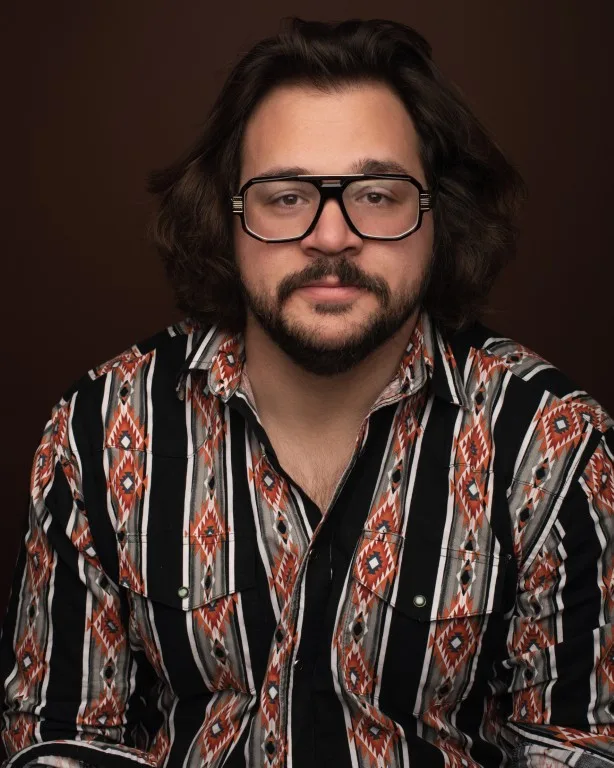
Filmed around Baltimore in December of 2023, with their small crew bundling up to film scenes all around the city—from quiet residential areas to crowded city streets, and even scenes at the Francis Scott Key Bridge, just months before its collapse—“The Baltimorons” doubles as a heartwarming tribute to what Duplass affectionately calls “that wonderful, terrible city.” And yet, since its world premiere in Austin at this year’s South By Southwest Film Festival, where it won the Audience Award, the film has traveled far and wide, from the Chicago Critics Film Festival (where it was the opening-night selection) to Czechia’s Karlovy Vary International Film Festival (where Strassner received a hero’s welcome, as described below), reflecting the crowd-pleasing quality of their little Christmas miracle.
A few weeks before the film’s theatrical release and corresponding tour—which will bring them back through Chicago for a post-film Q&A at the Music Box Theatre on Sept. 12—Duplass and Strassner sat down to discuss the “dream come true” of their last few months with “The Baltimorons,” their process of discovery in shooting it on location, and staying in the moment with characters still learning to take their lives one day at a time.
This interview has been edited and condensed.
Michael and Jay, you’ve now brought this regionally specific holiday comedy all over the world—to Chicago and the Czech Republic, to name just two that are profoundly not Baltimore. What’s that experience been like?
Jay Duplass: I mean, it’s life-affirming. That’s how I would describe the experience. You ask anybody if you should make an independent film with no movie stars in it, and they’re just going to be like, “No, don’t do that. You can’t make your money back. You can’t get anybody to watch it. You can’t get anything.” And, every step of the way, that has been proven wrong to us.
It’s been life-affirming, because, from day one, Michael and I were just like, “Let’s just try and make a beautiful, original piece of art that’s based in truth, that has love and adventure and experimentation involved in it. And it’s basically unfolded in the way we dreamed it would unfold, but that everybody told us it wouldn’t. We were almost afraid to believe it could happen that way.
Michael Strassner: “A dream come true” is what I would say. Starting at South by Southwest, and having the audience there love it, hearing the laughs for the first time with Jay next to me, and him holding my hand… He’d said, “If we get a laugh in the first five minutes, we’re going to be okay, bud.”
Then going to all these festivals, hearing not only different cities but different countries react to this movie, has been the most beautiful thing in the world. Like a stalker, I’d peep in through the back of the theater; if there were a full house, I’d stay, because I just love to hear what the audience thinks. In Karlovy Vary, a woman in her 60s gave me a pen and was like, “Can you sign for me?” I said, “Sure, do you have paper?” And she said, “No, I want you to sign my upper chest.”
JD: You signed boobs!
MS: And that was crazy. But in all honesty, these last five months have been this storybook journey. I never would have imagined this was it. Even in my wildest dreams, I would have gotten it wrong, because it’s been so much better.
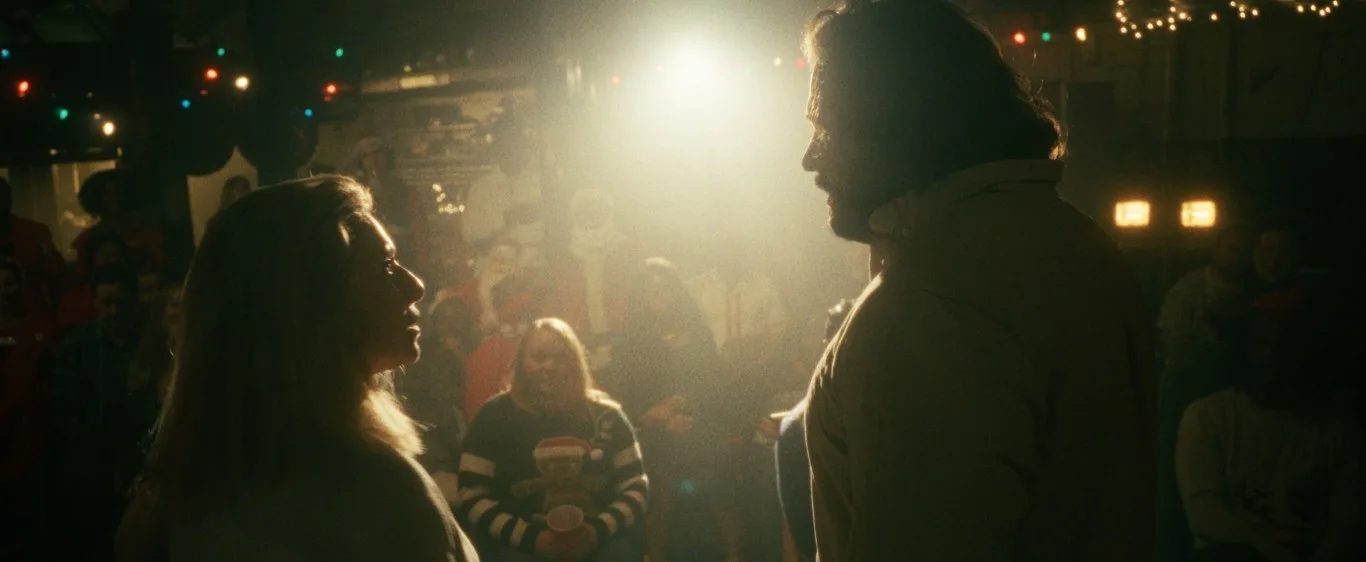
To go back to the beginning, I understand you two met through Instagram?
MS: Actually, no—Plenty of Fish is where we met. It’s this Christian dating app for single men.
That’s right—my mistake. Super happy for you two.
JD: [laughing] Michael’s sketches were just coming across my Instagram feed. It was the pandemic, and I was just looking for stuff that made me happy, and Michael doing crazy shit on Instagram—dancing, doing impersonations—was part of that. What, did I message you first?
MS: No, no—you gave me a follow. That was a big moment. I was like, “Oh my god, Jay followed me.” And then I messaged him, because I was like, “You know what? This guy’s my hero. And I look up to him a lot. And I look up to just the films he’s created. I’m going to shoot my shot, because I hear that he helps out people, that he’s a caring human being.” And I sent him a DM about a short being like, “I love this [film you did, and this series] you did. Even if you just respond, I’d be happy.” Six months later, he saw it, and he was like, “Dude, I think you’re funny. Send me your script!” I sent it to him, and then he was like, “Come over to my house.” And I was like, “That’s where your kids live.”
Good to remind him of.
JD: He was like, “I’m gonna be a lot of body, coming over to your house.” Then he showed up in a Jetta—topless. I was looking out the window, and he got out of the car, and I realized he was, like, wafting his shirt. He has no AC in his Jetta, and so he has to drive around with no shirt, then cool off, put the shirt on, and move forward.
MS: I get to places about 20 minutes early, just so I can do this activity. I have leather seats, which is also not what I thought it was. I thought it was cool in 2012; it’s not cool when the AC goes out, and my back’s stuck to the seat.”
I told him a little about my life story as a thank you, because he helped me with the short and such, and then he called me the next April and was like, “I want to back-end someone’s life into a movie. Do you want to do it?” I was like, “I got nothing going on, that’s an amazing opportunity, so yes,” and that’s what started “Baltimorons.”
To the point of bringing personal experiences into the story, your character’s fiancée, played by Olivia Luccardi, is encouraging him toward healthier behavior: “No more alcohol, no more comedy shows.” Someone who loves Cliff tells him, “You can’t keep doing this,” with regard to not only self-destructive drinking but the creative outlet that’s contributing. I loved the depiction in your film of that turning point so many people trying to make it in the arts go through, coming out of their 20s and entering their 30s, where what felt more innocent and hopeful becomes…
JD: Eccentric and problematic—in your 30s, yes, absolutely.
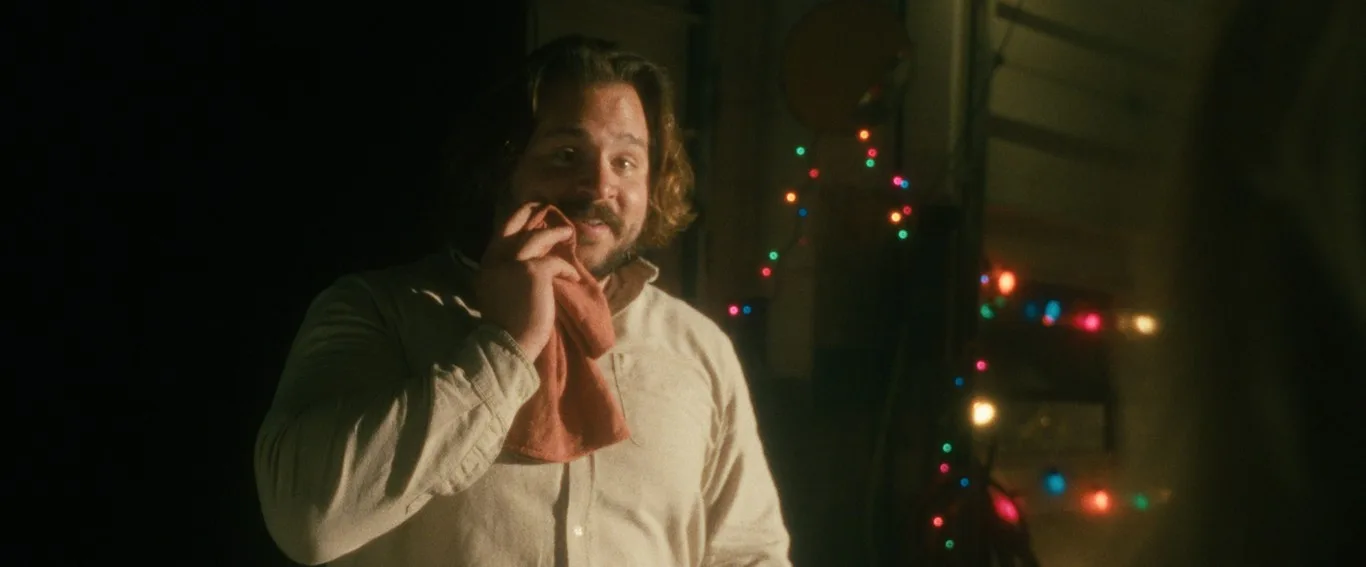
Tell me about writing a film about that anxiety, about the process of figuring out how to keep living your life and pursuing your creative ambitions in a healthy, sustainable way.
JD: So much about Michael’s being, about his comedy and his story, was inspiring and painful; knowing him was pinging me with ideas, pinging my spirit to think about the story. I can’t turn it off; that’s always being processed. That was true, especially at the tail-end of a long run of the pandemic and the strikes. It was the first time we started thinking, “Is it even viable to be making independent films?” It certainly wasn’t viable, at this level, during the pandemic. If we had made this movie during the pandemic, the COVID budget would have cost more than the movie.
But to address what you’re saying, there are so many things about Michael that inspired me to want to create a story around him, but the one thing that you identified—no more alcohol, no more comedy shows—was probably the most singular nugget. Michael told me that, when he got sober, he thought that meant the end of his comedy career. The way that he was on stage, he was like a Chris Farley character in sketch comedy; he was known as that, and that didn’t end very well. When he told me that, I distinctly remember feeling, “That is the beginning of a very interesting movie.” There have been so many movies about climbing out of alcoholism, but what separates this movie is that it’s very specifically about early sobriety, about being a baby in the world and not knowing what’s possible, much less whether continuing to live is possible. And no more alcohol, no more comedy—those were the two things this man was living for.
MS: I remember doing my “SNL” showcase and, when I got off stage, I’d literally snuck in a bottle of bourbon, because I could not wait to drink it. That went so hand-in-hand. When I got sober, I was like, “Oh, my life’s over. Who are my friends? What am I going to do? Everything revolves around drinking. How am I going to live a life without alcohol?” Because it was such a blanket; I was like, “Please don’t take this away from me, almost to the point of death.” I thought I was not going to have any fun anymore in my life. Alcohol brought me so much joy, and I didn’t look at the pain aspect at all, at all the depression I had. It was only about how much fun I was having at a party.
The first year of sobriety, all these things are your firsts. It’s your first Thanksgiving, your first Christmas, your first wedding, your first time watching the Ravens play—all these things that had gone so hand-in-hand with alcohol. Constantly, I was like, “How am I going to get through this, you know?” And it was like, “Well, how about you just worry about the second? Worry about the minute. Worry about whatever’s happening right now on this day. We’re not yet at New Year’s Eve; we’re just at Christmas. Just worry about getting through Christmas Eve.”
And then you realize, or at least I realized—after that year, six months in—how better my life had become, how it ended up. The number of opportunities I’ve had, I never would have had if I were still drinking. It gets very warped; but for me, it was “take this one thing out, and you get everything.” But my heroes were Chris Farley and Jim Belushi! And that’s what they did, those “SNL” heroes of mine. They partied! And I was okay with dying, as my heroes did. But if you look at that, 30 years later, their best friends are still talking about them, because they miss them so much.
That idea of never drinking again can be so daunting for somebody just starting out in sobriety, but that mantra that you take one day at a time is captured so beautifully in “The Baltimorons.” Can you tell me about structuring this script, figuring out what revelations would come when, while retaining that 24-hour rule as a guide? Was the scene where Cliff gets back on stage at the improv show, such a turning point in how he’s thinking about a future being both funny and sober, always positioned where it ended up in the film?
JD: We didn’t do that many drafts of this script. We had the seed, the origin story, and we had Michael; once we had Liz, we had her whole side of the story. Then, it was like, “Okay, here we go.” It was only a few drafts, but I think we always knew that his going on stage and doing the scariest thing possible for him while sober was going to be our second-act climax.
MS: What you said to me many times, Jay, was that Cliff saved Didi at [her ex-husband’s house,] in the scariest situation she could imagine, and now she has to save Cliff.
JD: Right, we had to see if she could save you here in this almost impossible situation. The movie has a slightly interesting structure, because that scene might be like the A-plot climax, but the B-plot climax is him realizing that it’s actually not “no comedy”—there’s what he says on the pier, which is “I think I can actually do this sober. I think it might actually be better”—but it is the loss of his fiancée. That’s the real conflict or climax: fully letting go of that former life, even when she was the one who probably nursed him through the first several months of sobriety. That doesn’t mean that they’re right for each other.
So, it has a bit of an odd structure, and we spent a lot of time nuancing that in editorial, making sure that it didn’t come too much later. With a complicated movie, sometimes you just have to say, “What do you want to see next?” Obviously, you don’t want to make your audience hang around and wait, but the more we tested it with friends, family, and filmmakers that we love and know, they were like, “No, we want it to keep going. Take time with the fiancée. Go all the way.”
The ending was a big process of discovery for us. We reshot the improv scene; it wasn’t originally quite as smart as it is now. We added a bit about him going to AA, but it was only through us really watching the movie and learning ourselves—because you get caught up in this journey too—that you realize that man is dry-drunking through this whole damn movie. [laughs] That’s one of the things I love about it so much: that process of discovery. I didn’t know about dry-drunking, and Michael had to tell me about it. He is evolving, he is growing, he is punching out new territory that he needs to punch out—but he’s also trying way too hard to keep this emotion going, and that’s part of his addiction. It’s not perfection—far from it.
The movie was a process of discovery for both of us, you know. It’s your first feature film that you wrote, Michael, and I don’t know anything about this world. I had to learn about it through Michael, and we were just figuring it out together as we went. Most of the subsequent drafts of the film happened during the shooting, where we would learn what we didn’t need and what we did need.
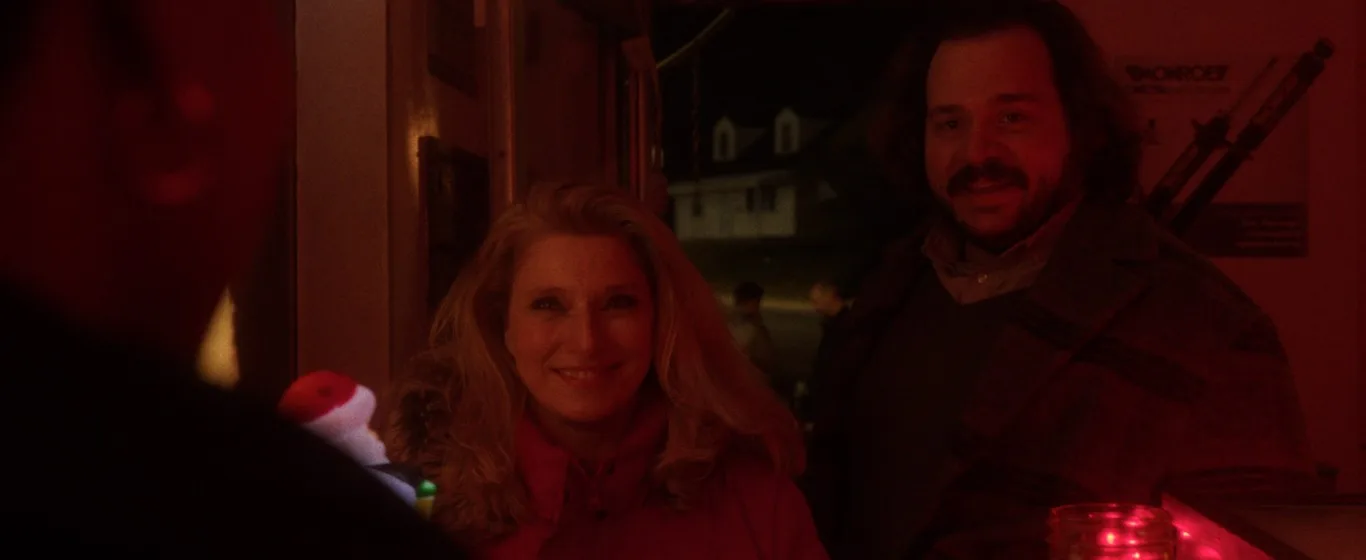
This brings us to discussing how you filmed in Baltimore around the holidays. I grew up more of a Masshole than a Baltimoron, but it’s palpable how much of this city’s character you brought into the story: the Bawlmer accents, the Key Bridge, Christmas dinner where the Ravens are playing the Pittsburgh Steelers, jokes about Lamar Jackson’s dentist. Tell me about the process of bringing in all these elements of Baltimore while shooting there.
MS: Well, I certainly cannot wait for this film to play in Baltimore, because there have been Baltimore people in the audience, but a full Baltimore audience, I feel, is going to be a pretty magical experience.
JD: Explosive, I’d say.
MS: Even like Conway’s purple camo pants, that’s what people wear at the Ravens games, and that’s what this guy’s gonna wear to the wedding. We snuck in all these touches: RoFo is where everyone gets their fried chicken and Western Fries. Berger Cookies are there, and so are Natty Bohs. In all honesty, I grew up there, I was born and raised there, and I feel like it just does such an honor to the city by showing that it’s a pretty tough and horrendous city at times, but there’s also a ton of eclectic people. There’s a beauty there that is just undeniable.
A couple of my favorite shots are under the Francis Scott Key Bridge, which is no longer there; it’s a truly stunning portrayal of Baltimore, as well as the Federal Hill neighborhood. Seeing that whole city, all the lights and colors, and 34th Street—we got so lucky with locations, just asking people, “Hey, can we do this?” And they were just saying, “Yeah, sure.” That’s the Baltimore spirit: “What can we do to help?” Then, to get a seal of approval from John Waters at a festival was icing on the cake.
Were there moments where the energy of Baltimore, where you were filming, changed the direction of specific scenes?
JD: We were a crew of about 15 people, running around, so we were constantly affected by everything that was happening.
MS: Remember the 12 O’Clock Boyz? They’re dirt-bike riders who are always roaring through Hampden. During a walk-and-talk scene, Jay was like, “Jesus Christ, when are these guys going to stop?” [laughs]
JD: All kinds of stuff would happen. Sometimes, we would replicate; sometimes, we would just leave it in. It was just the whole experience. We were very immersed in Baltimore. We were roaming around in the middle of the night with a small crew, shooting on the street, without control, without lockdowns. We were just out there in the mix. For instance, the 34th Street Christmas Tree Lane area was live. We just posted signs: “Hey, if you’re here, you agree to be in this movie.” All those extras that you see are there just enjoying it, in a way, and screaming and yelling; all that sound is in there. You’re just seeing Baltimore as it is. That’s why we had to shoot at Christmas; we never could have afforded to light the city up the way it was already lit up. We just went to where we wanted to shoot. And that’s the great thing about having a small crew; it’s a small-enough footprint where a lot of people didn’t even notice us.
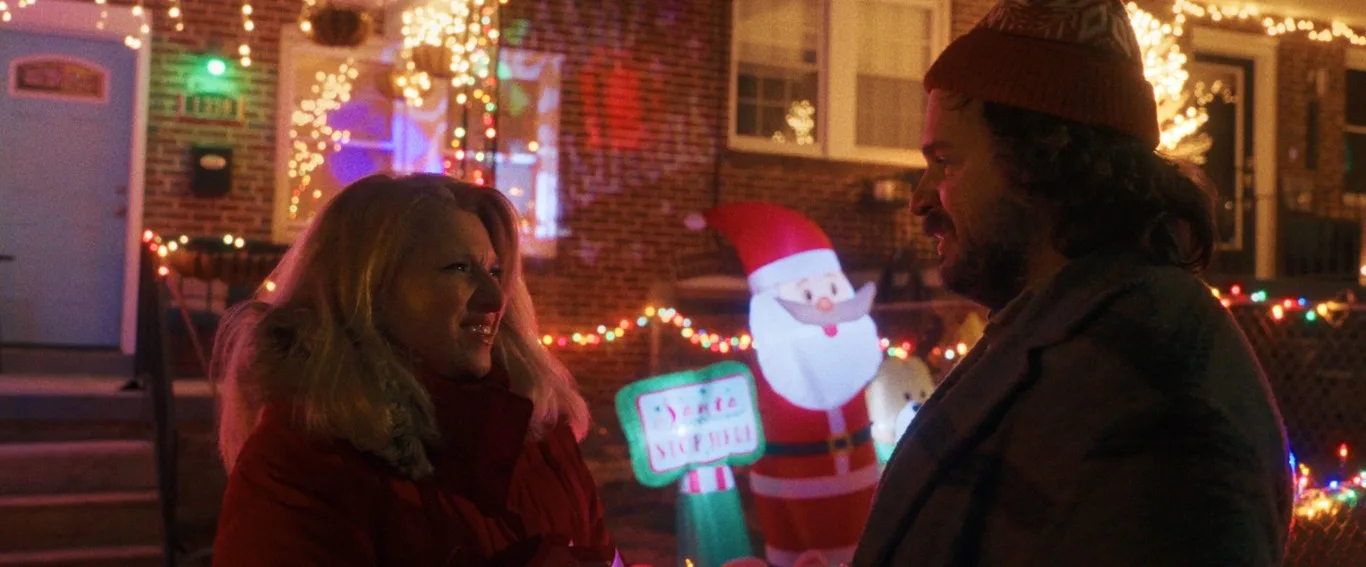
Jay, there’s a certain vein of behavioral comedy to the films you’ve made, where so much of what’s driving not only the plot as written but the dramatic construction of a scene is your sensitivity to the way your actors are interacting: their energy, their chemistry, their momentum. That’s the heartbeat. Is that an intentional throughline for you, or a result of the type of filmmaking you’re interested in? What do you keep in mind when filming actors? What are you looking for in the dynamics forming between them?
JD: That’s so nice. Thanks for saying all that. You know, I feel like I first started getting good at dramaturgy when I joined a Sanford Meisner acting cult in Austin, Texas. We got so entrenched and specific about being very real, about doing things for real. The philosophy is, “If you’re not moved to do something, you don’t do anything at all.”
That’s sort of like how I set the stage with my actors. I’m like, “You are not obligated to entertain me. You are not obligated to do this or that, but there are going to be some things to do, and I just want you to do them.” And I find that, like a documentarian, when somebody’s really doing something and you’re following it, it’s inherently riveting, if they are really doing that thing.
I just try to set the stage in a non-overt way that we’re just going to be doing stuff, and I try to back that up with my writing. It might not be the biggest plot in the world, but if I’m doing my job right, it’s motivated by real, powerful desire, and all those actions are well-seated. I’d be curious to see what Michael feels about it. I don’t talk about it a lot overtly, but it is something that I think about a lot.
MS: Jay is the best director I’ve ever worked with in my life. He truly is. He gave me the best note ever at the start. He just said, “You’re enough, just so you know. Going into this, you don’t have to push. Just be in the moment, listen, and respond. But, I mean, try to say the gist of the line.” [laughs] I think we both have a similar sense of grounded comedy. We’re not going for laughs here; even the physical comedy that’s in this feels real. It doesn’t feel like someone’s slipping on an oily floor to fill a comic moment.
I hate the term “grounded,” because it’s just like, what is that? It just means real. It means seeing real people and sounding like a human. I think also, where I came from in comedy, you never want to go for the laugh, but you still want to get laughs. What I learned is that, just by listening and responding, funny stuff comes out. When you see it in front of an audience, you’re like, “Damn, that worked.” Which is the greatest truth-teller of them all, you know? Because when you’re watching the edit for the 100th time, you’re like, “God, is this even funny? What even is this anymore?” And then when you hear the laughter, you know, “That’s it.”
That’s how I always want to move my career forward, through the work that I do with others; it’s true, even if you watch Bill Murray in “Ghostbusters,” every line he says is hysterical, but he’s not doing much. It’s all very matter-of-fact, like, “Thanks, Ray, we got it.” When I feel a comedy does that, it’s the best, because it’s so easy to go into broad comedy, pushing for laughs. There is a really tight line that you’re walking the whole time.
Let’s talk about Liz Larsen, who came into “The Baltimorons” and brought her own story, her own comic sensibility, together with yours.
JD: Liz is our queen. Michael and I spent a lot of time thinking about who Didi might be. And I told him, I think it might be Liz Larsen, whom I’d only seen on stage in a musical. I had no idea if she could act in a naturalistic setting; I just knew she blew me away. When I sat down with her and learned her story, I learned a lot. Her real-life story inspired that reveal on the boat, where she says, “I turned 50. My husband left me for a younger woman, I became a grandmother, and I started menopause. Boom, boom, boom.” That was very inspired by her story of turning 50 and becoming invisible, not just in Hollywood but in general social life.
Her sense of humor and gravitas are similar to Michael’s in terms of their realness; she had great instincts. Similar to Michael, she knew she wasn’t there to play the comedy. She was there to play the scenes; her desires, actions, and instincts were incredible. It was her instinct to go so hard against Michael’s character in the beginning. It was shocking and exciting, like how hard she was stiff-arming him. The journey that she makes towards him over the course of this 24-hour day is as big a journey as you can make, literally, and it’s fully believable. She played it all masterfully. She’s been around the block. She knows what’s up. We got lucky. And she’s so tough — no trailers, no warming tents, no nothing.
MS: There’s no movie without Liz. Literally, there was one Mercedes, which is what we sat in between takes, and that’s all we had. Jay’s was the Cadillac, because he had to take naps, and it had a bigger backseat. [laughs] With Liz, it was so easy, because you just get lost in the scene with her. She gives so much. She was cold as ice at the start, which is so funny, because when we’d cut, she was this bubbly person giggling with her emphysema laugh that’s full-on. And then she turns it on during filming, and it’s like, “Oh, god. She does not want to be with this guy at all.” And the way she slowly comes around, it’s true magic. With what she did, and with what Olivia [Luccardi, playing Cliff’s fiancée,] did, we got so lucky.
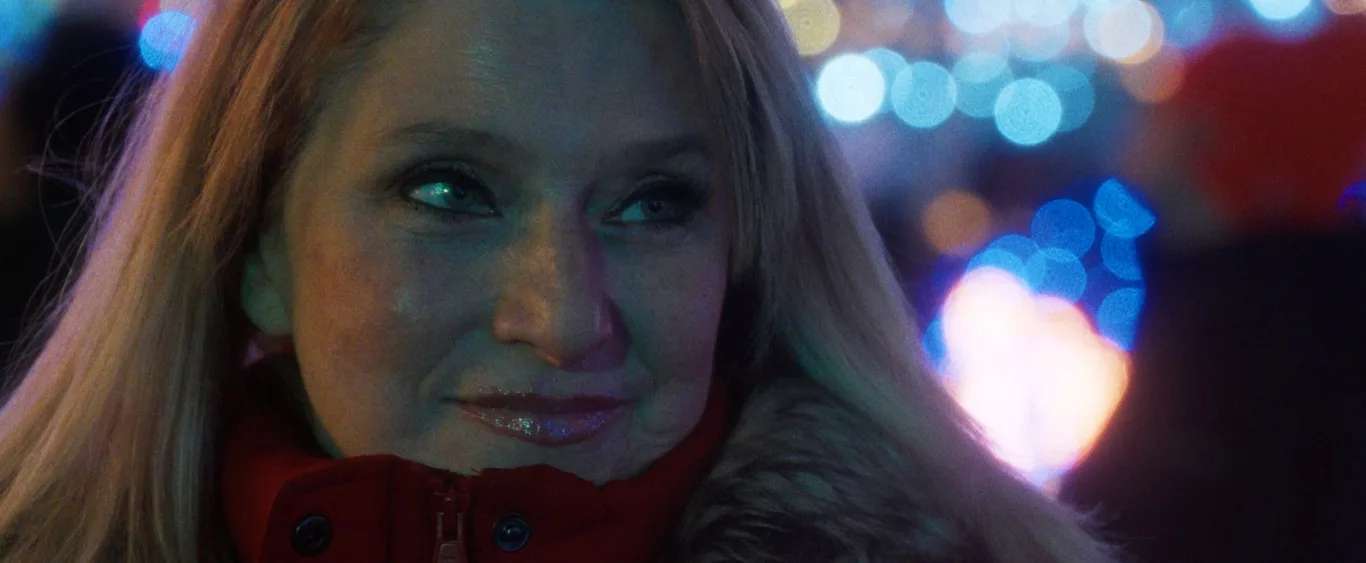
An early scene I wanted to mention is at Didi’s office, where we learn that Cliff does not do well with needles. Is that true for either of you?
JD: One of the things that’s so special about Michael is that he’s the most sensitive, gentle human being inside the body of a 1978 Chicago Bears linebacker. [laughs]
MS: Not a tight end? I’m a tight end. [chanting] Ditka! Ditka!
JD: You are not a tight end, dude. You are…
MS: [hopeful] Mike Singletary?
JD: Left tackle, baby. You’re Dick Butkus. [laughs]
MS: I’m Dick Butkus, there we go.
JD: I wanted to show, right off the bat, that this is a big guy, but he’s also super-sensitive and vulnerable. My best friend growing up actually passed out when he saw needles. I went to the pediatrician with him one time. We were like 16 or 17, and he passed out.
MS: [incredulous] You were still going to the pediatrician at 17, Jay?
JD: His dad was the pediatrician, so we kind of just kept going. We’d come in the back door, and we’d drive ourselves to the pediatrician.
MS: You’d get a lollipop.
JD: We all went—me and my brother, him and his two sisters—and we were all getting ready to leave, when his dad came in one time and was like, “I don’t think you’re leaving for a while. Will is on the floor.” [laughs] So I had a personal experience with that, and it was always kind of a funny story, but I thought it was much funnier on Michael, because she says it in the scene. She says, “Come on, you’re a big, strong guy,” which has nothing to do with anything.
MS: You remind me of a story from my childhood. I was at the pediatrician’s, and I was 15.
JD: I bet you looked 38.
MS: I was probably 180-190 pounds at that point. And this nurse was trying to distract me, so she was like, “You having a good summer, you enjoying yourself?” And then she just straight-up pricked me and didn’t warn me. And I was like, “What the heck?” She knew from the last time that I was super wary of needles. I don’t love them, that’s for sure.
JD: You could have swiped your bear paw, and that would have turned into a nightmare.
MS: Jay kept saving me during that scene. I kept saying “tropicals” instead of “topicals.”
JD: There’s a whole other cut of this film that my 13-year-old son would like better.
Michael, this story started in such a personal place for you. What was it like to see its orbit expand as you brought in more creative collaborators?
MS: People can be like, “This is my story, and I’m sticking to it. This is what it is.” And it’s like, “Okay, good luck being collaborative.” Once you give it to other people, things change. You don’t need to be addicted to exactly how things happened. My story is just a little nugget of it, and it turned into something so beautiful because we were all open to adding other people’s stories into this creative experience. To make it more well-rounded, everybody gets a seat at the table.
JD: And it’s like we were talking about earlier, in terms of environment. If Baltimore did not want us to be on this particular street on this particular day, we had to go somewhere else. You’re just constantly responding and being in the moment—kind of like improv. The whole process was a “Yes, and…”
MS: Open to everywhere and attached to nothing. [laughs] That’s Wayne Dyer.
“The Baltimorons” opens in New York on Sept. 4, then expands nationwide Sept. 12, via IFC Films and Sapan Studios.
